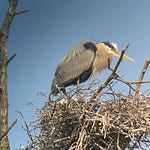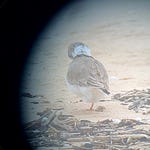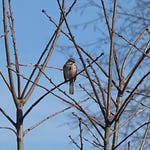Two swallow species, nesting about 100 yards apart. The first is a Bank Swallow, a colonial species that favors burrows in a sand bank over at Montrose Beach Dunes. Dozens of pairs are nesting there for another season.
On the other side of the dune are a pair of Tree Swallows who’ve set up in one of the nest boxes deployed on the site just for them.
Nesting habits
Bank Swallow1
Nests in a burrow, usually in a vertical bank, natural or artificial, quarry or cliff. A tunnel bored by both adults. The terminal chamber lined with plant stems, feathers and similar material. Usually double-brooded. Incubation by both adults.
Tree Swallow
Nests in a natural cavity or woodpecker hole in tree, also in cavity or crevice in building or wooden structure, and nest-box. Single-brooded, incubation by female.
About the video
You’ll notice in the clip, filmed in May, that it takes one Bank Swallow five tries before it successfully enters the burrow. There may be a couple possibilities as to what’s going on here. First, perhaps the burrow’s occupant, busy incubating, was getting ready to exit the dormitory.2 Or was this swallow not certain it had arrived at the right burrow?
In the Tree Swallow portion of the clip, a female exits the nest-box and the male lingers around afterward, eventually settling on top of the dormitory. This may just be a female getting out to forage and taking a break from egg-laying or incubation. It was too early in May for there to be chicks, most likely. The male didn’t enjoy my presence either, by the way, and circled around me thrice before landing on the box.
Inside info
Montrose Point is great for swallow species! Rough-winged Swallows, Barn Swallows, and Purple Martins also nest nearby. Cliff Swallows are easy to see in migration, and vagrant Cave Swallows were seen in November 2012.
Paul J. Baicich and Colin J. O. Harrison, Nests, Eggs, and Nestlings of North American Birds, 1997, Princeton University Press.
A seminal work, 1993’s Birds Asleep by Alexander F. Skutch, invariably refers to burrows and cavities as dormitories.










